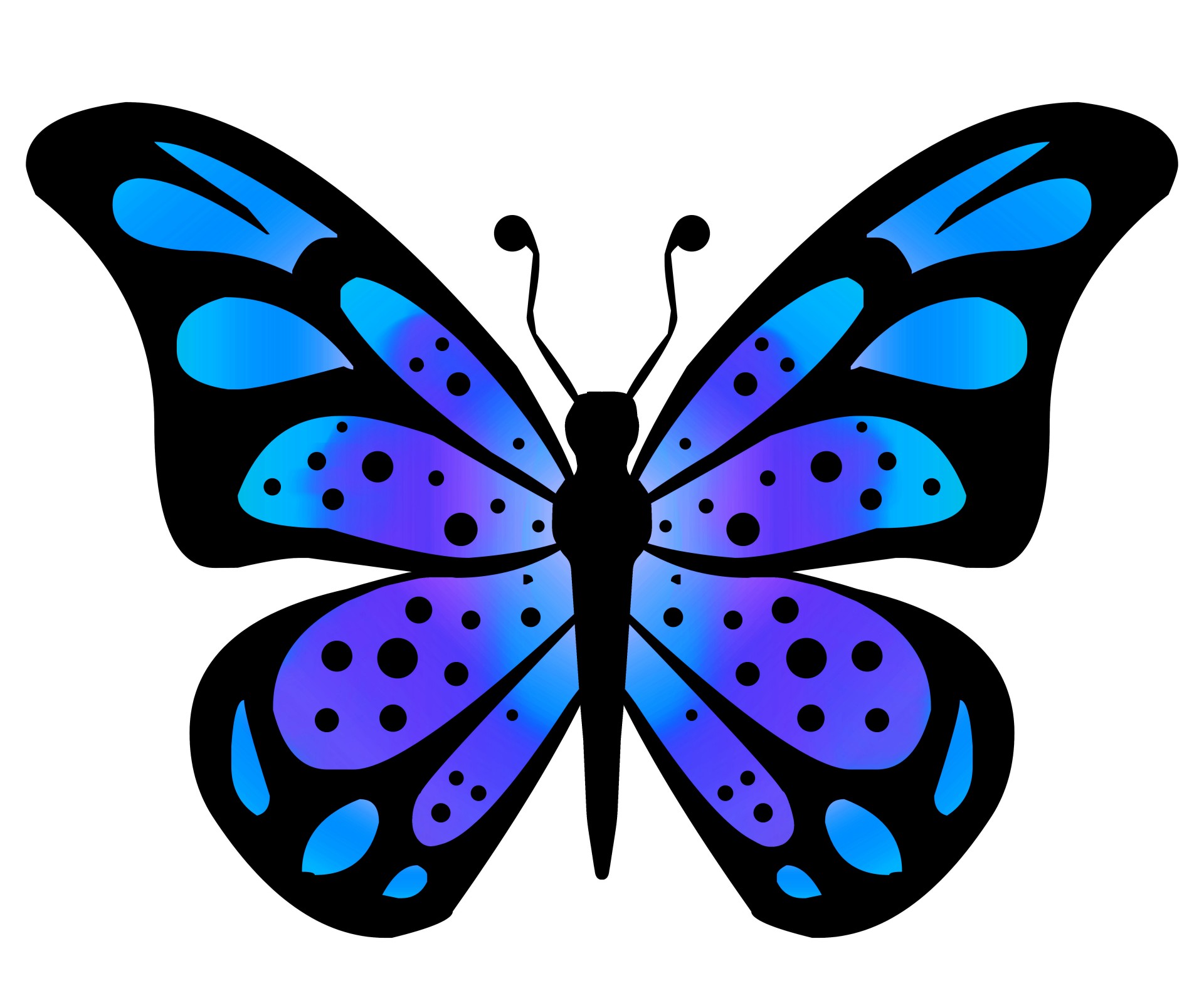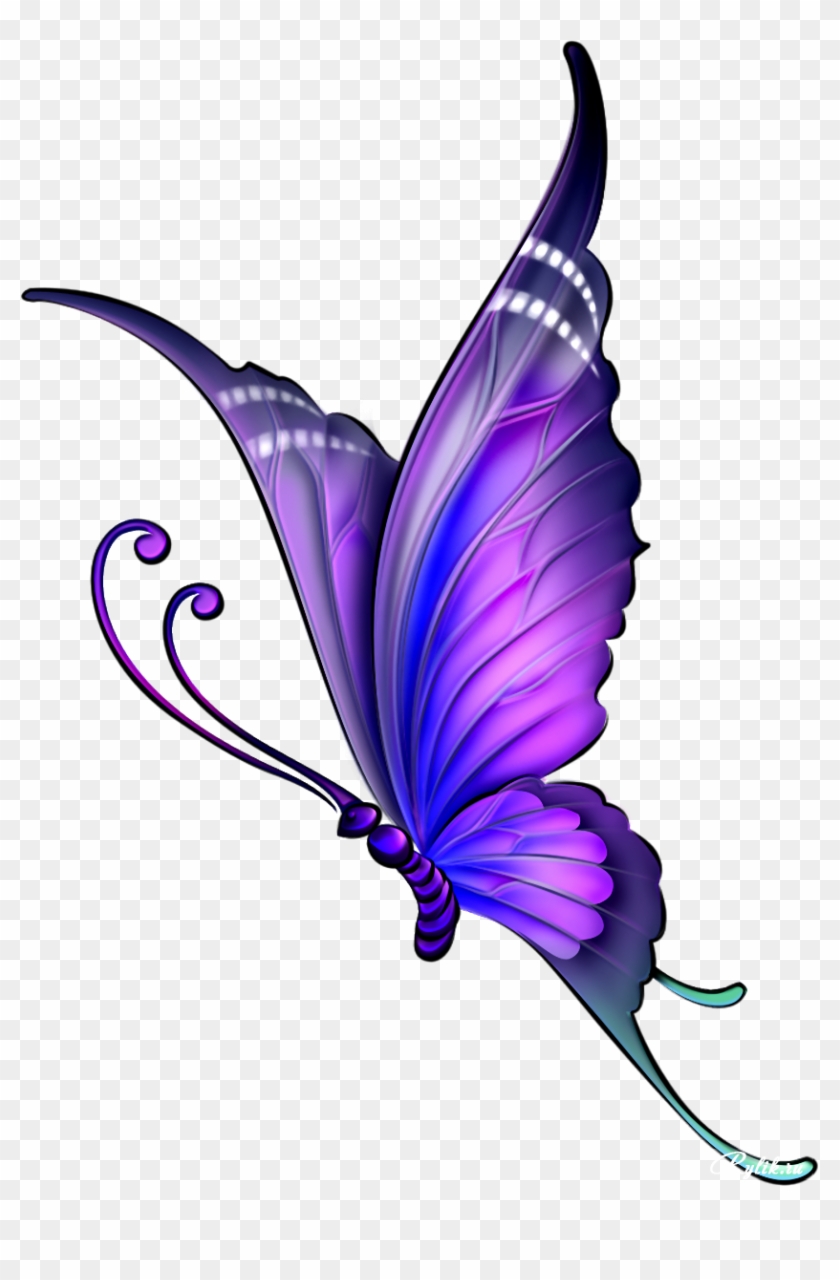Have you ever stopped to admire a butterfly flitting through a meadow, its wings a kaleidoscope of colors and patterns, and wondered what makes it so vibrantly beautiful? The color of a butterfly is more than just an aesthetic delight; it’s a fascinating story of evolution, adaptation, and survival. It’s a tale told in hues, shades, and patterns that tell a silent language of camouflage, communication, and attracting mates.

Image: clipart-library.com
The colors we see in butterfly wings are not painted on like a canvas; they are a product of complex biological processes that involve pigments, scales, and the unique way butterfly wings interact with light. The study of butterfly wing colors offers a window into the wonders of nature, revealing a world where beauty and function are inextricably linked. Let’s embark on this colorful adventure to delve into the world of butterfly wings and uncover the secrets that lie beneath their shimmering surfaces.
The Science of Color: Pigments and Scales
Pigments: The Foundation of Butterfly Colors
The most common way butterflies achieve their colors is through pigments, natural substances that absorb specific wavelengths of light and reflect others. These pigments are embedded in tiny, overlapping scales that cover the wings like shingles on a roof.
For example, melanin, the pigment responsible for brown and black hues in many animals, including butterflies, absorbs most wavelengths of light, leaving only the darker colors visible. Similarly, carotenoids, which give carrots their orange color, produce vibrant yellow, orange, and red hues in butterflies. Other pigments, such as pterins, contribute to the brilliance of yellow and white.
Scales: The Architectural Wonders of Butterfly Wings
Butterfly scales are not simply containers for pigment; they are microscopic masterpieces of architecture. Each scale is a thin, overlapping plate that is precisely shaped and arranged for a specific purpose. Their shape and composition influence how light interacts with them, creating a range of optical effects.
The scales themselves can be pigmented, but they also can act as prisms, refracting light and creating vibrant iridescence. Imagine a tiny, three-dimensional, miniature prism scattering and reflecting light, leaving a shimmering rainbow effect on the butterfly’s wings. This is one of the reasons why butterfly wings often appear to change color as they move, catching the light from different angles.

Image: www.clipartmax.com
Structural Colors: The Magic of Light Interference
Sometimes, butterfly wings achieve dazzling colors without any pigments at all. This phenomenon is called structural color, and it arises from the unique interaction of light with the microscopic structures of the butterfly scales.
Imagine a layered thin film, like a soap bubble, reflecting and refracting light. When certain wavelengths of light interfere with each other, they cancel each other out, while others reinforce each other. This interference pattern results in vibrant colors, often with iridescent qualities. These colors, unlike pigment-based colors, change depending on the angle of viewing, adding to the captivating brilliance of butterfly wings.
Evolution of Color: Camouflage, Communication, and Mate Attraction
The evolution of butterfly colors is a testament to the remarkable power of natural selection. Color patterns serve various purposes, enhancing survival, communication, and reproduction. These colors have evolved over millennia, driven by the need for adaptation and survival.
Camouflage: Blending into the Background
For many butterflies, color is a vital tool for camouflage. They use their wings to blend in with their surroundings, escaping predators’ keen eyes. Some butterflies have wings that mimic the bark of trees, leaves, or even bird droppings, effectively hiding them from hungry birds or other predators.
For example, the Viceroy butterfly mimics the Monarch, which tastes foul to birds. By mimicking the Monarch’s color pattern, the Viceroy enjoys the benefit of predator avoidance without having to actually taste bad. This is an example of mimicry, where one species evolves to resemble another, providing protection from predation.
Communication: Signaling to Other Butterflies
Color patterns also play a critical role in communication, particularly within a species. Some butterflies use color to signal their presence, deter rivals, or convey information about food sources. For example, the male Blue Morpho butterfly uses his vibrant blue wings to display his dominance and attract females.
There’s an astounding diversity in how butterflies use color to communicate. For instance, some species have complex wing patterns that act as visual cues for mates, helping them identify members of their own species. These patterns can include specific colors, shapes, and even the arrangement of scales on the wings. The intricate dance of colors and patterns in butterfly wings serves as a visual language, allowing them to communicate important information across short distances.
Mate Attraction: Winning the Game of Love
One of the most captivating aspects of butterfly color is its role in mate attraction. Brightly colored wings can signal fitness, vitality, and reproductive potential to potential mates. A butterfly’s color pattern is often a reflection of its health and genetic quality.
Butterflies that have bright vibrant colors and intricate patterns have high levels of carotenoids, pigments associated with healthy immune systems. These colorful butterflies are more likely to attract mates, ensuring the survival and propagation of healthy genes within the species. The beauty of butterfly wings has a deeper meaning – it’s a silent testament to the power of evolution and the captivating dance of natural selection.
What Is The Color Of A Butterfly
The Colorful World of Butterfly Wings
The color of a butterfly is a captivating story, woven into the fabric of evolution, adaptation, and communication. It’s a world where colors beyond the spectrum of human vision play a vital role in survival, reproduction, and the delicate balance of nature. From dazzling iridescent hues to subtle camouflage patterns, each butterfly wing tells a unique tale of beauty and resilience.
As you watch these winged wonders dance in a meadow, remember the intricate processes, the pigments, the scales, and the magic of light interference that create their dazzling hues. Each butterfly is a living masterpiece, a testament to the boundless creativity and intricate beauty of our natural world.





